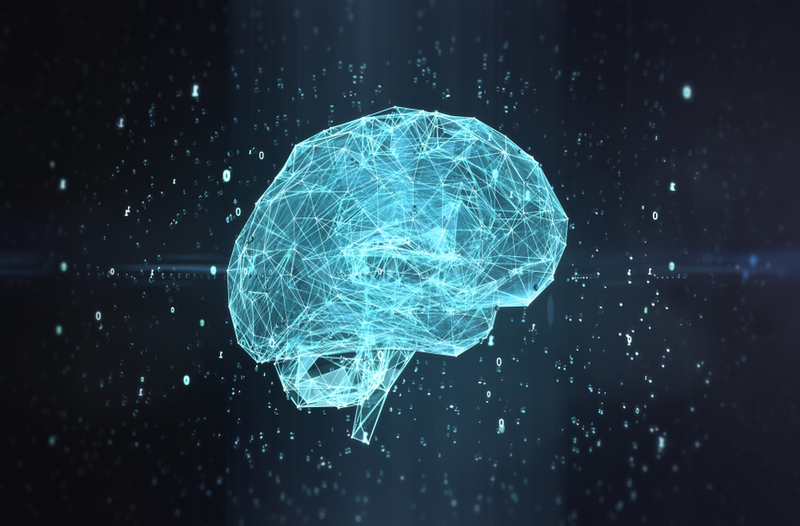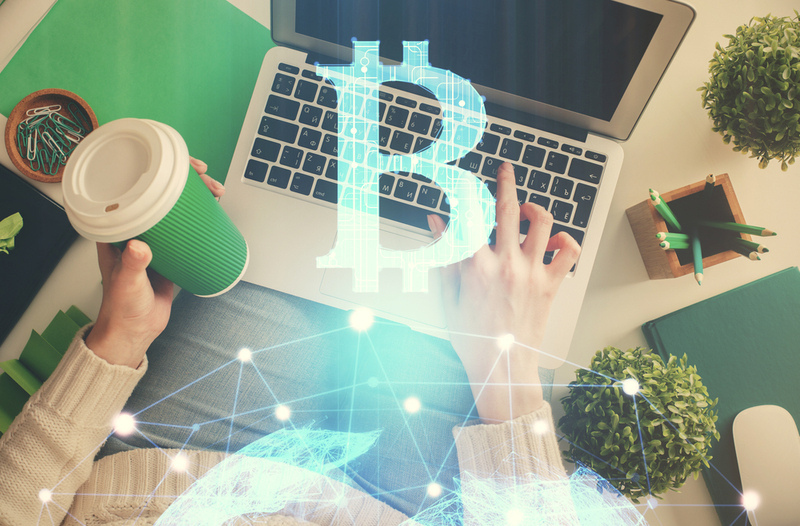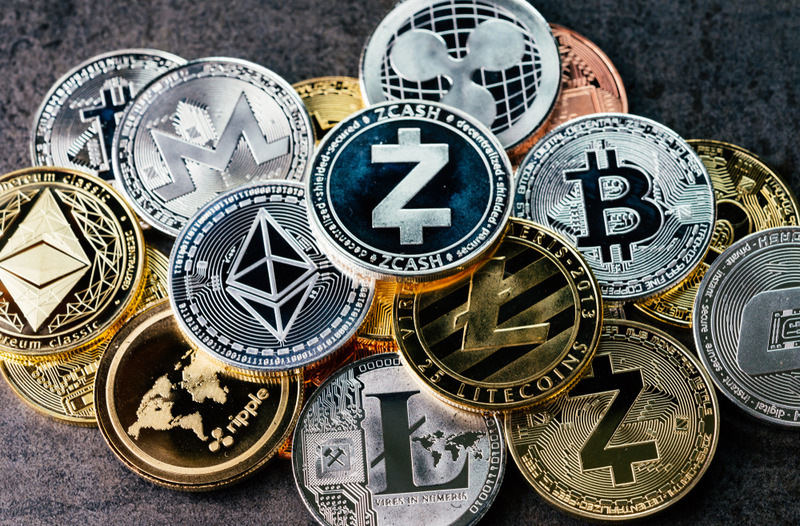Blockchain
Another of the ubiquitous terms of our day is blockchain, although it is perhaps less widely understood than others like virtual reality (VR) or facial recognition technology, which have names that are more self-explanatory. For the most part, one may be aware of some linkage between blockchain and cryptocurrencies like Bitcoin. Beyond that, one may be under the impression that it is good news for security (or bad news, depending on how one thinks).
How it actually does this is still not common knowledge, and even if one does possess a basic understanding of it, there is still a lot about it that can leave people baffled. With more and more organisations embracing blockchain, everyone should do their due diligence and inform themselves about this remarkable system.
Blockchain, which sometimes goes by the less well-known name of Distributed Ledger Technology (DLT), refers to a decentralised digital storing and record-keeping system. It acts like a public ledger that is maintained by a peer-to-peer (P2P) network of users. This means that no central body or authority retains control over it or access to it.
Any updates to the information that is stored in blockchain must have the consent of the system’s participants. Moreover, any changes will only result in information being added. No information can ever be removed once it is stored in this manner. This means that additions and alterations can always be tracked and seen by all who have access.
A new take on an older idea
A good example of something similar to this would be online file-sharing platforms like Google Docs. Several users can have access to a document and make alterations and additions, yet a record is kept of everything that has been done to the document should anyone want to see what happened and at whose hands. This is why blockchain is so integral to cryptocurrencies. Whereas a fiat currency requires banking institutions to guarantee the security and validity of transactions, cryptocurrencies are guaranteed by blockchain technology.
So, rather than having one central body to manage and guarantee transactions, the responsibility is spread over a wide userbase who each have a copy of the information. Private blockchain information is encrypted, which can protect sensitive information like identity and such. But it is still stored in blockchain form.
Ensuring traceability at all levels
This is where blockchain gets its name. The wide network of information packages that are shared and maintained by this P2P network are called ‘blocks’. The blocks are the stores of data, which themselves are maintained by ‘nodes’ (the devices that keep these records). Changes will just add more information, meaning more blocks, which are linked to each other in a chain. Hence, ‘block-chain’. This is what allows blockchain technology to act like a digital trail of breadcrumbs. A good example that does not involve cryptocurrency is the lifecycle of a product.
A major retailer can use blockchain to track the lifecycle of a product from source materials to customer. Every time said product is moved, altered, stored, or otherwise interacted with, the information is stored in blockchain. Accordingly, if anything goes wrong, the digital trail of breadcrumbs can allow the retailer to pinpoint where this happened. Moreover, this can be used to reassure conscientious consumers who want to know where their products come from. In fact, US retail giant Walmart made use of blockchain for this very purpose – to track food items.
The relationship between blockchain and cryptocurrencies has already been alluded to. Indeed, Bitcoin was the first ever known use of blockchain technology, which explains why the two are so often associated with each other. However, the potential for blockchain could potentially eclipse Bitcoin altogether, perhaps even cryptocurrencies as a whole, which might just end up being a small part of the greater blockchain revolution.
Its uses are not hard to see; an apparently unerasable and decentralised record of all changes made would make it impossible to embezzle funds, totally lose track of items in the supply chain, or distribute counterfeit currency. Sooner or later, blockchain may come to affect every aspect of the economy of the future.
The end of the road for middlemen?
Blockchain can be bad news for certain business models that rely on middlemen or guarantors. For example, companies like PayPal make their profits by guaranteeing the security of transactions. The same goes for Expedia or Airbnb, which act as middlemen between consumers and sellers. We use these services because they have a solid reputation, and this makes us confident when we pay for a service.
If we had to rely on the goodwill of a vendor about whom we know nothing, we might be more hesitant when it comes to parting with our money. With blockchain, a detailed record of the vendor’s public, commercial activities can be accessed by anyone to verify their claims of honesty. The vendors will not be able to hide any unpleasantness nor censor bad feedback. It will be permanently stored. So, middlemen companies will need to adapt accordingly if they are to remain relevant in the future.
For example, tourism company TUI Group – the largest of its kind in the world – is already bringing blockchain on board to make it easier for travellers to interact directly with hotels. It already has a private (and therefore encrypted) blockchain for storing its contracts, but is also looking into setting up a public one to achieve the aforementioned direct contact between consumers and vendors. This is just one example of a company that has seen the writing on the wall and chosen to adapt quickly.
Free from doubt, free from fear
Contracts and payments are another area where blockchain is showing its potential – it was the latter that arguably got the whole thing started. Doubt and mendacity are the bane of honest and fluid interactions between people. Blockchain’s strength is its ability to almost totally erase doubt, by ensuring that nothing else can be erased. It’s also free, as if this was all not good enough already. A person’s identity is a key part of this and for ensuring trust.
Given that information stored in blockchain can never be erased, it becomes virtually impossible to have one’s identity stolen. Equally, this removes the threat of impersonators looking to con people. Accomplishments and events can also be stored in this way, meaning that a person cannot simply claim to have graduated from a certain institution with an ostensibly original certificate, nor claim to be a Nigerian prince who just needs help transferring funds.
When blockchain is combined with the IoT (Internet of Things, or sum-total of all sensory devices capable of uploading information to the web), the result is both unprecedented transparency and greater room for efficiency than ever before. This is precisely what companies like Samsung and IBM have already done; allowing for inexpensive autonomous communication between machines in a system, powered by informational inputs from the IoT.
The uses of blockchain in education
To understand the potential uses of blockchain for the educational sector, one must first consider the shortcomings and challenge the latter already faces. Whether private or state institutions; schools, universities, colleges, and everything in-between collectively take in hundreds of millions of students on an annual basis. For many of these students, there are financial transactions to be conducted and recorded.
Each student will have a record of when they entered the institution, whether or not they met the necessary requirements, their tuition fee or scholarship status, their grades, their curricula and attendance, and much more besides. Moreover, this all has to be updated on a regular basis (daily, in the case of attendance). The same goes for staff, all of whom will have detailed professional and academic histories and backgrounds, salaries, time off, publications, attendance rates, and so on and so forth. Smaller transactions, like late library fees, printing fees, transcript issuances, and hundreds of others will also need to be stored and accounted for.
Simplifying the administrative maze
Already, the potential for blockchain starts to become apparent. We can add to this the problems students (and academics) face when transferring from one institution to another. Credits, classes, certifications, degrees, and more will need to be transferred, validated, and recognised. A-level or IB certificates will need to be shown and proven to enter university, and a bachelor’s degree to go on to postgraduate education.
In the unlikely scenario where a student does all of this in the closed ecosystem of a single institution, the problems are fewer – but still present. But, for most students, a school change or two may happen between nursery and graduation, university exchange programmes may be taken advantage of, and postgraduates may go elsewhere as well. This can be an administrative nightmare, and a logistical nightmare for students who are eternally having to prove their identity and records.
By using blockchain, every student would have a detailed online record of their entire academic history from primary school to gaining a PhD. Every grade attained, every exam retaken, every course completed, every paper submitted, and every certificate earned will be permanently and safely recorded for posterity. In a sense, this is a CV that verifies itself. A blockchain network that grants educational institutions joint access to these records would almost totally erase the mountain of administrative and other work outlined above.
Then there is the learning process itself. More and more learning is being done online. This can be e-learning, where students are not present during classes or lectures, or could simply mean group projects that are uploaded to Google Docs or similar. Additionally, we are seeing new approaches to education, such as blended and hybrid learning, online courses, and digital certifications. These are also removing the geographical obstacles to learning. A student could be living in the Arctic Circle and still attend a course in Canberra.
Effortless transfers of students and staff
The result would be an education system that is almost unrecognisable. If a student transfers from one school or university to another, they would not have to act as a carrier pigeon bringing transcripts from one institution to the next. Instead, the blockchain would keep a constantly updating record of the student’s academic progress. A move to another part of the country, or even to another country altogether, would similarly no longer require them to move transcripts and other proofs of achievement around with them.
Getting certificates, transcripts, and other such documentation validated or equivalised in an area or country with different approaches would also cease to be necessary, as every detail of the courses the student attended and exams they sat would be in evidence. So long as the institution is part of an international network of educational bodies utilising common blockchain-based records of students, said students can move freely between them without the hassle of having to constantly prove or validate their academic achievements at great cost – both in terms of time and effort, and in terms of money spent.
A new level of intellectual property protection
Plagiarism and the verification of one’s efforts are also quite pressing concerns in educational institutions, especially at the university level. Every research paper, presentation, or other publication can be securely stored in the blockchain, along with the precise time this was done, thereby making it much harder for students (or indeed academics) to cheat. The original creators of any piece of content would therefore not need to wage an endless battle to prove who got there first – the blockchain would be immediately available to verify who is telling the truth.
We have all heard a story or two about a fantastic idea, concept, story, or something else that was spotted and stolen by a powerful individual or company, while the original creator of said concept was unable to prove ownership and financially incapable of fighting what might be a fruitless legal battle anyway. Blockchain records eliminate this threat, as they will always be able to verify the originator of an idea, concept, or similar.
Anyone who makes a design, writes a book or paper, produces a film, composes music, or any other creative endeavour will be forever sure of their ability to prove their status as the originator thereof. And given that educational institutions are hubs for creativity in all fields, the opportunities are considerable.
One of the primary problems that blockchain technology faces is its image. This is partially due to the fact that it is not widely understood, and partially due to its continued connection in the minds of many to cryptocurrencies, especially Bitcoin. Depending on who one talks to, this can bring with it some unfortunate associations in people’s heads regarding hackers, traffickers, fraudsters, drug dealers, and so on. There is the idea that if people are flocking to cryptocurrencies because they offer unprecedented privacy, that this means these people have something to hide.
The unbreakable link to Bitcoin?
Moreover, cryptocurrencies are notoriously volatile in terms of their value, going up and down by double-digit percentage points almost overnight at times. They are also still a somewhat niche phenomenon. Most people still use normal bank accounts and credit cards, and most retailers still do not take payments in crypto.
This perception of cryptocurrencies as being the concern of a technologically-savvy ‘elite’, coupled with its ostensible volatility and association with undesirables, gives cryptocurrencies a bad reputation in certain circles. And when we remember the fact that blockchain is inextricably linked to cryptocurrencies in the minds of many, then all of the negative associations of the former are applied to the latter.
It is not the purpose of this article to defend cryptocurrencies, but rather to dismiss unwarranted concerns, clarify confusion, and address some of the concerns that are valid in order to bring about a better understanding of blockchain in general. The volatility of Bitcoin is beyond doubt, and often makes news headlines. What must be remembered is that the volatility of Bitcoin’s value is due to a market of supply and demand – something that predates Bitcoin.
There is nothing in the design of Bitcoin (or indeed any cryptocurrency) that accounts for this. It was not designed to hold value or lose it – it was designed to be decentralised and secure. On the one hand, one may see this as an oversight that should have been accounted for when cryptocurrencies like Bitcoin were designed. But on the other hand, we would do well to remember that supply and demand affect everything. The problem is not one of cryptocurrencies, but of economics. We cannot fault the former for the (apparent) shortcomings of the latter.
Blockchain is much bigger than cryptocurrencies
More generally, we need to remember that Bitcoin and other cryptocurrencies are just one part of the larger picture when it comes to blockchain technology. Blockchain has a myriad of applications, both real and potential, and cryptocurrencies may end up being the least of these. Even if all of the negative associations of cryptocurrencies are real (which a lot of them are not) then this should not necessarily reflect upon blockchain.
Every new technology is a tool that has the potential for both good and bad uses. As human beings, what we choose to do with something is down to us. The fact also remains that whether or not we choose to use them at all will have a great impact on their development. A lot of hesitancy regarding blockchain is simply down to a choice. This lowers the general demand for it and prevents its further development. Unless popular conceptions change, progress is going to be slow.
This is not to say that growth has been negligible. On the contrary, between 2017 and 2020 the demand for jobs related to blockchain increased by nearly 2000 per cent. This makes it all the more necessary for regulations to be developed that are both effective and clearly understandable – something that still needs to be done and threatens to be an obstacle to wider adoption. This is a unique problem for blockchain, which by its very nature side-lines any need for oversight.
In some ways it makes it more difficult, as it protects privacy very effectively with encryption. For the most part, companies and individuals make what they will of it, and this can worry a lot of people who would rather wait and let someone else take the risk before they do. The considerations mentioned above are largely true of other phenomena, and are not weaknesses inherently unique to blockchain.
Promising, but with room to grow
Moreover, there are still weaknesses to blockchain that are not so widely discussed. For example, private blockchains are thought to be less resilient than their public counterparts to attacks – although even this is debatable, with others claiming the opposite to be true under certain circumstances. Loss of an access password (what in blockchain is called a ‘key’) will still lock someone out of access. This can mean losing access to a fortune in cryptocurrency. Additionally, control over a majority of a blockchain’s nodes (the devices, such as computers, that contain copies of records) could possibly allow for changes to actually be made – making blockchain less secure and unerasable than is often claimed.
The problem that underlines all of the above is the fact that blockchain technology is still relatively young. Like any nascent technology, there will be no lack of misunderstandings, weaknesses, oversights, misconceptions, attempts at manipulation, and misinformation. If we are to make the most of this new technology and avoid its shortcomings, we need to stay informed and up to date.






